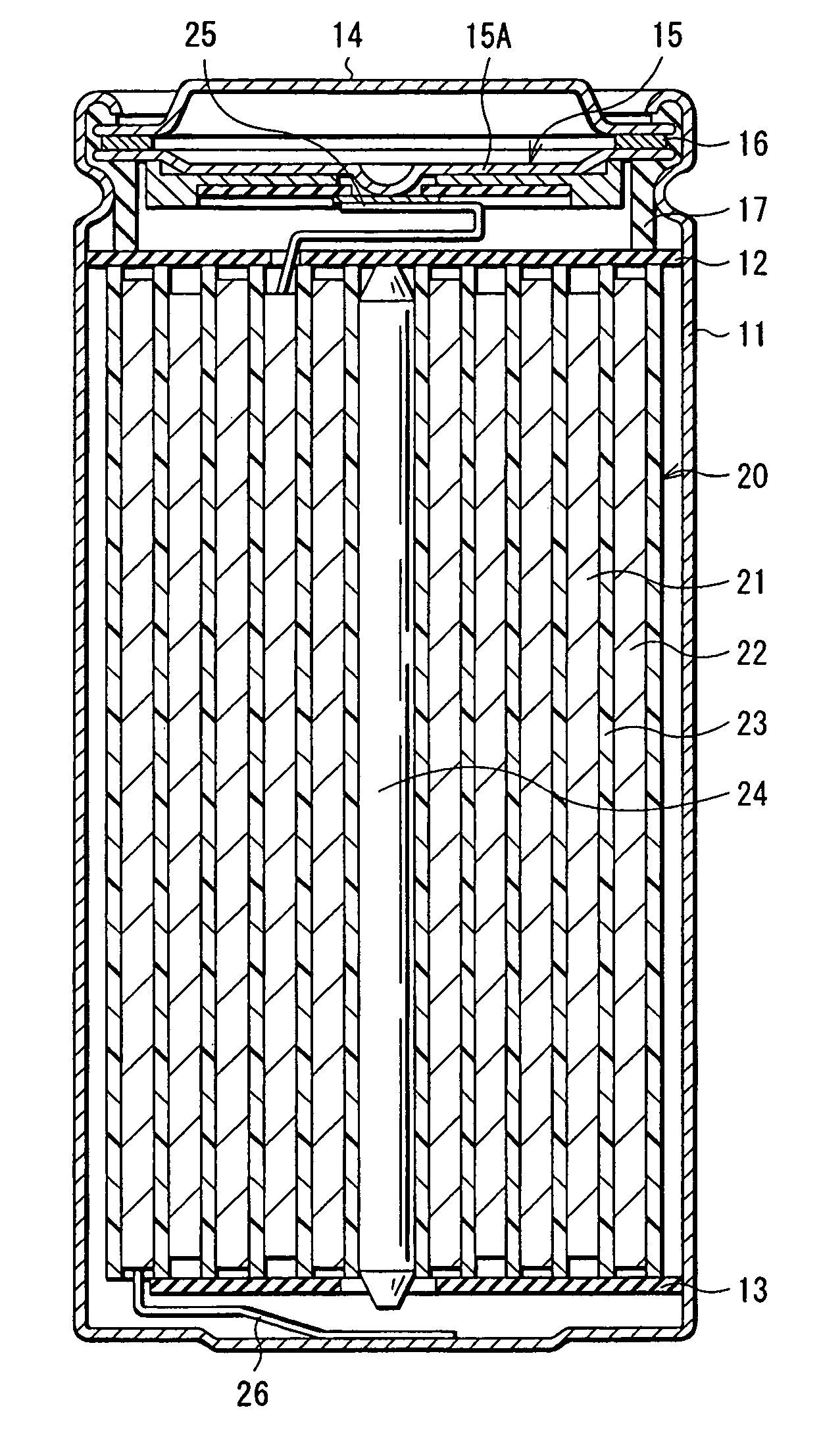Electrolytic solution and battery
- Summary
- Abstract
- Description
- Claims
- Application Information
AI Technical Summary
Benefits of technology
Problems solved by technology
Method used
Image
Examples
examples
[0098] Further, specific examples of the present invention will be described in detail.
examples 1-1 to 1-6
[0099] The cylindrical secondary battery as shown in FIG. 1 was fabricated.
[0100] First, 0.5 mol of lithium carbonate and 1 mol of cobalt carbonate were mixed. The mixture was fired for 5 hours at 890 deg C. in the air to synthesize lithium cobalt complex oxide (LiCoO2) as the cathode active material, which was then made into powders with the average particle diameter of 10 μm. Regarding the obtained lithium cobalt complex oxide, X-ray diffraction measurement was performed. The result thereof well corresponded with the spectrum of lithium cobalt complex oxide (LiCoO2) registered in JCPDS file.
[0101] Next, 95 parts by weight of the lithium cobalt complex oxide powders and 5 parts by weight of lithium carbonate powders were mixed. 91 parts by weight of the mixture, 6 parts by weight of graphite (KS-15 of Lonza) as the electrical conductor, and 3 parts by weight of polyvinylidene fluoride as the binder were mixed to prepare a cathode mixture. The cathode mixture was dispersed in N-me...
examples 2-1 to 2-6
[0116] Secondary batteries were fabricated as in Examples 1-1 to 1-6, except that CoSnC containing material powders were used instead of copper-tin alloy powders as an anode active material. Then, the CoSnC containing material powders were formed as follows. First, as raw materials, cobalt powders, tin powders, carbon powders were prepared. Cobalt powders and tin powders were alloyed to form cobalt-tin alloy powders, to which carbon powders were added and dry-blended. Next, the mixture and 400 g of a steel ball being 9 mm in diameter were set in the reaction vessel of a planetary ball mill of Ito Seisakusho. Subsequently, inside of the reaction vessel was substituted with the argon atmosphere. Then, 10-minute operation at 250 rpm and 10-minute interval were repeated until the total operation time reached 30 hours to synthesize a CoSnC containing material by utilizing mechanochemical reaction. After that, the reaction vessel was cooled down to room temperatures and the synthesized Co...
PUM
 Login to View More
Login to View More Abstract
Description
Claims
Application Information
 Login to View More
Login to View More - R&D
- Intellectual Property
- Life Sciences
- Materials
- Tech Scout
- Unparalleled Data Quality
- Higher Quality Content
- 60% Fewer Hallucinations
Browse by: Latest US Patents, China's latest patents, Technical Efficacy Thesaurus, Application Domain, Technology Topic, Popular Technical Reports.
© 2025 PatSnap. All rights reserved.Legal|Privacy policy|Modern Slavery Act Transparency Statement|Sitemap|About US| Contact US: help@patsnap.com



